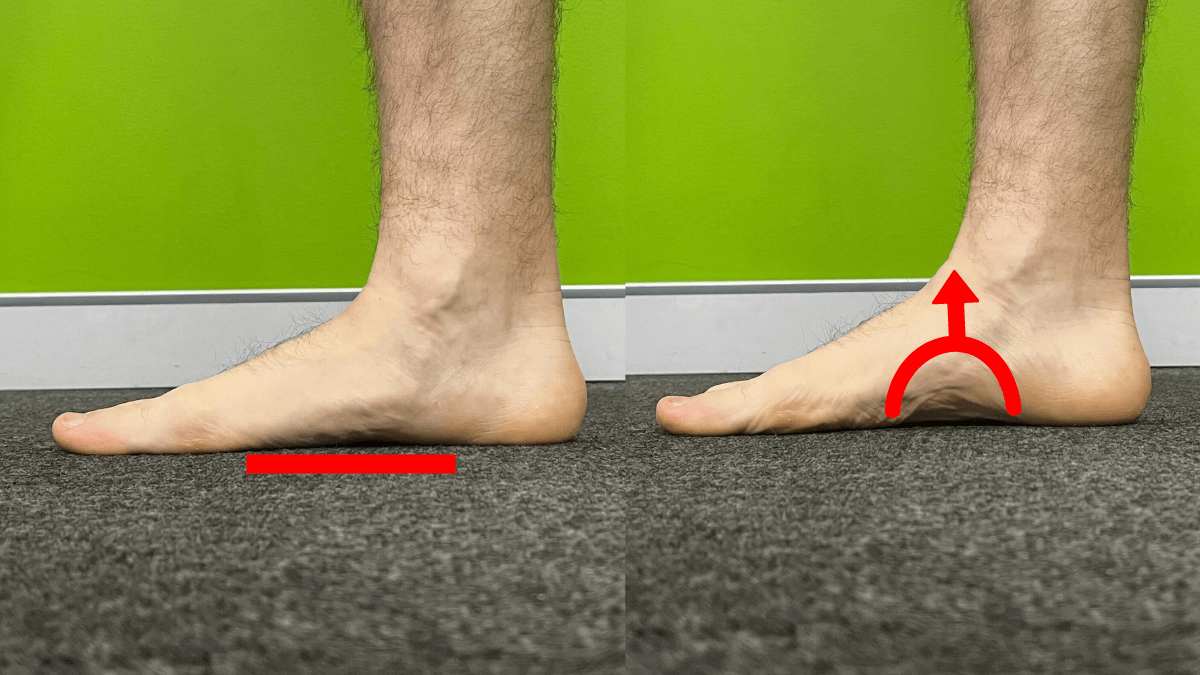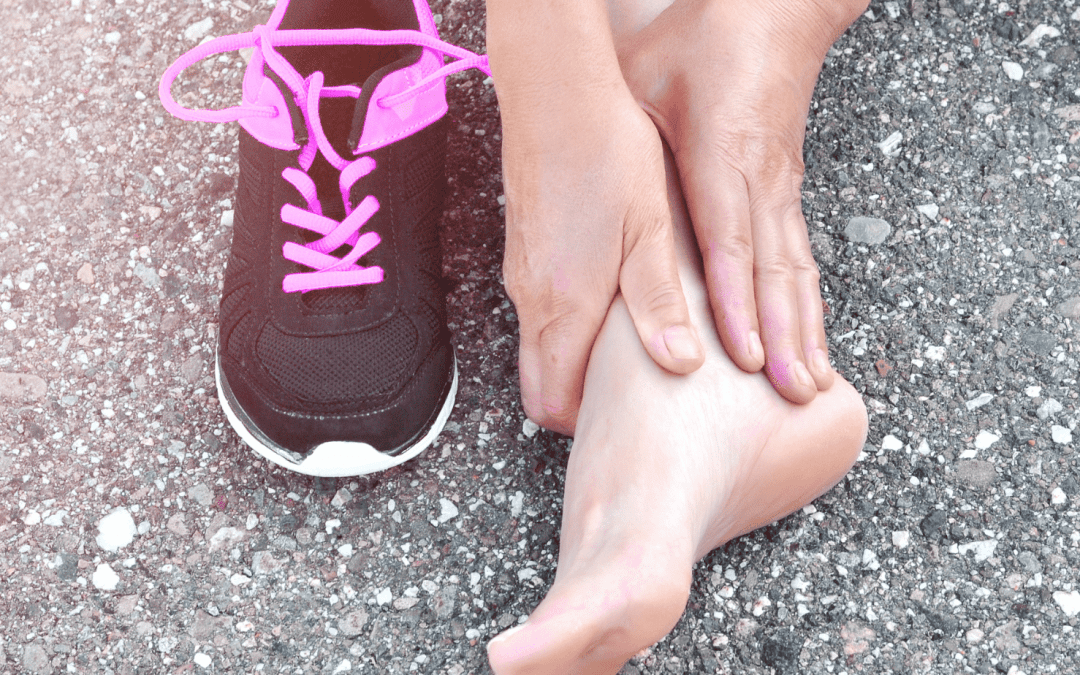The Tibialis Posterior is a muscle that runs down the inside of the shin and attaches into the Navicular and medial cuneiform bones of the midfoot (Corcoran & Varacallo, 2023). It acts as the primary dynamic stabiliser of the rearfoot and medial longitudinal arch.
Tibialis Posterior Tendinopathy occurs when the tendon is irritated as a result of overload or repetitive stress/strain (Romero-Morales et al., 2023). The location of pain is usually on the inside of the ankle behind the medial malleolus, as well as in the medial arch of the foot. This pain is typically experienced during weightbearing activities such as walking, running, or jumping. It’s a common yet often misdiagnosed source of medial foot and ankle pain (Halstead & Munteanu, 2023). This condition affects 5%-15% of Australians with a significantly higher incidence amongst women (Mills et al., 2020).

Signs and Symptoms
The symptoms of tibialis posterior tendinopathy can be gradual or sudden, including:
- Pain and swelling along the inner side of the ankle
- Pain that worsens with activity and eases with rest
- Difficulty in performing activities that involve foot inversion (turning the foot inward)
- A flattening of the foot arch in advanced cases (Rhim et al., 2022).
Risk Factors
- Overuse, especially in runners and athletes participating in high impact sports.
- Poor foot biomechanics, including overpronation.
- Inadequate footwear that fails to provide sufficient arch support.
- Age-related degeneration of the tendon
- Obesity, which puts additional strain on the foot structures (Deu et al., 2022).
Understanding these risk factors is key to both prevention and targeted treatment.

Physiotherapy Assessment
Our assessment of suspected tibialis posterior tendinopathy is thorough and patient specific. A detailed subjective history is performed to understand the nature and onset of symptoms, and the demands of work, sport and leisure activities is critical. Our Physical examination typically begins with an analysis of gait, and then an assessment of foot and ankle mobility, strength, and alignment. We also assess the kinetic chain to determine if there are any contributing factors such as poor gluteal stability or a lack of calf strength. Symptoms are commonly reproduced on resisted inversion, a single leg calf raise and there is tenderness on palpation along the tibialis posterior tendon (Ross et al., 2021).

Physiotherapy Treatment
Treatment plans are individualized with the patient’s goals in mind and based on the latest research and clinical guidelines:
- Load Management: Initial load management is crucial for pain relief but also to allow the tendon to heal (Rhim et al., 2022). This may involve modifying the aggravating activities, ice, taping, and appropriate management of a patient’s load throughout the day such as daily steps and time on feet. Activity modification will facilitate healing.
- Manual Therapy: Hands-on techniques are not only important for pain management in the early stages, but they also serve to restore and joint mobility deficits or muscle tightness.
- Exercise Therapy: An exercise program is critical to progressively load the tibialis posterior muscle and tendon, as well as to improve the strength and function of surrounding muscles to offload the area of injury (such as the calf, foot muscles, core, glutes, etc). In addition, it is important to achieve full foot and ankle range of motion, improve balance and proprioception, as well as working on the endurance of the muscles so that they do not fatigue as quickly.
- Orthotics and Footwear Advice: Guidance on appropriate footwear and the use of orthotics to support the foot arch and reduce tendon strain.

Exercises
Calf raises on reformer (+ ball between feet)
Aim: Strengthen the calf with tibialis posterior activation
How: Lying on your back on the reformer with your toes on the foot-bar shoulder width apart. Place a soft ball in between above the ankles, then push away from the footbar so that your knees are extended. Keeping the knees locked straight, go onto your toes and then back down so that your heels drop below the footbar. Move in and out of this position, making sure the ball does not fall from between the feet, engaging your tibialis posterior while strengthening your calf.

Arch Raises
Aim: To activate tibialis posterior and the intrinsic foot muscles
How: Standing with your foot flat on the ground, actively try and lift the inside arch of the foot. A good way of doing this is to think about trying to shorten the distance between the big toe and heel, without curling the toes or placing your weight on the outside border of the foot. Hold 5 seconds and repeat.

TheraBand Inversion
Aim: To strengthen the tibialis posterior muscle
How: Seated with legs out straight, cross one leg over the other so that it rests over the opposite knee. Loop a TheraBand around both feet, holding the ends. Point the toes of the straight leg down and scoop the foot inwards against the band, tracing an arc. At the end of the motion, scoop the foot back down in the opposite direction, and repeat.

If you or someone you care for has an injury, a flare up, requires some rehabilitation or experiences an increase in pain, give the clinic a call on 9713 2455 or book online.

